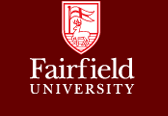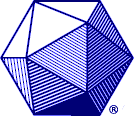
Northeastern Section of the Mathematical Association of America
Spring 2009 Meeting
May 29-30, 2009
Fairfield University
Fairfield, CT

 |
Northeastern Section of the Mathematical Association of AmericaSpring 2009 MeetingMay 29-30, 2009Fairfield UniversityFairfield, CT
|
 |
|
Home | Invited Speakers | Program Schedule | Project NExT
| Abstract
Submission | Registration | Meals | Travel |
Lodging
| Committee
|
||
Given a convex quadrilateral Q having a certain property P, we are interested in finding a dissection of Q into a finite number of smaller convex quadrilaterals, each of which has property P as well. In particular, we prove that every cyclic, orthodiagonal, or circumscribed quadrilateral can be dissected into cyclic, orthodiagonal, or circumscribed quadrilaterals, respectively. The problem becomes much more interesting if we restrict the study to a particular type of partition we call grid dissection.
Can a surface have a nowhere zero vector field? For tangent vector fields, it depends only on the surface. The zeroes of the vector field can be indexed and the sum of the indices equals the Euler Characteristic of the surface. Whether a surface in 3-space has a nowhere zero normal vector field depends on whether the surface is orientable. In 4-space, however, the sum of the indices of the zeroes of a normal vector field depends both on the surface and the mapping. This is the Normal Euler Number.
In this talk I will present work done with Tom Banchoff to extend the theory of Normal Euler Classes to polyhedral surfaces. After reframing the problem geometrically in terms of self-intersections, some intuition will be gained from lower dimensional analogues. Then self-intersections for polyhedral surfaces will be defined in terms of linking of curves and of faces. The main ideas will be illustrated through key examples (and pretty pictures), including an example where polyhedral surfaces differ from smooth surfaces.
In December 2008, as the financial and economic crisis continued on its devastating course, a new scandal erupted. After the 1998's failure of Long-Term Capital Management, Madoff's fraud once again discredits the hedge funds industry. This scandal is however of a different kind. Indeed, Madoff's firm is not a standard hedge fund but a developed Ponzi scheme. In this talk, we'll explore Madoff's system and the reasons for its collapse. We will then look at the risk management lessons one can draw from the Madoff fraud, especially for operational risk management and asset managers' risk capital requirements. Finally, we will ask what implications the Madoff affair should have on due diligence processes, and more broadly the general regulatory framework of the hedge fund industry and its future. This talk is based on a joint work with Pierre Clauss and Thierry Roncalli available for download at http://ssrn.com/abstract=1358086.
We are all familiar with what Pascal's arithmetic triangle but is our view correct or justified? Looking at original sources from Jakob Bernoulli's "Ars Conjectandi," Pascal's "Treatise on the Arithmetical Triangle," and Pierre Hérigone's "Cours mathematique," we will get a feel for some of the history of the arithmetic triangle. Each of the authors has their own approach to and presentation of the triangle, and what many may presume to be the most familiar may not be the one that is really what we teach today.
Because of the increasing power of computing machinery, cryptosystems, both public key and classical, are becoming less secure. At the same time there is an increasing need for secure cryptosystems. This is clear from the increasing use of internet shopping, electronic financial transfers and so on.
Most common public key cryptosystems and public key exchange proto- cols presently in use, such as the RSA algorithm, Diffie-Hellman, and elliptic curve methods are number theory based and hence depend on the structure of abelian groups. The strength of computing machinery has made these techniques theoretically susceptible to attack and hence recently there has been an active line of research to develop cryptosystems and key exchange protocols using noncommutative cryptographic platforms. This line of investigation has been given the broad title of noncommutative algebraic cryptography.
Up to this point the main sources for noncommutative cryptographic platforms has been nonabelian groups. In cryptosystems based on these objects algebraic properties of the platforms are used prominently in both devising cryptosystems and in cryptanalysis. In particular the nonsolvability of certain algorithmic problems in finitely presented groups, such as the conjugator search problem, has been crucial in encryption and decryption.
This talk will present an introduction to these combinatorial group theoretic methods - free group cryptography, Anshel-Anshel-Goldfeld, Braid Group Cryptography, Generic Complexity and other methods. Also we will describe where we stand at the present point.